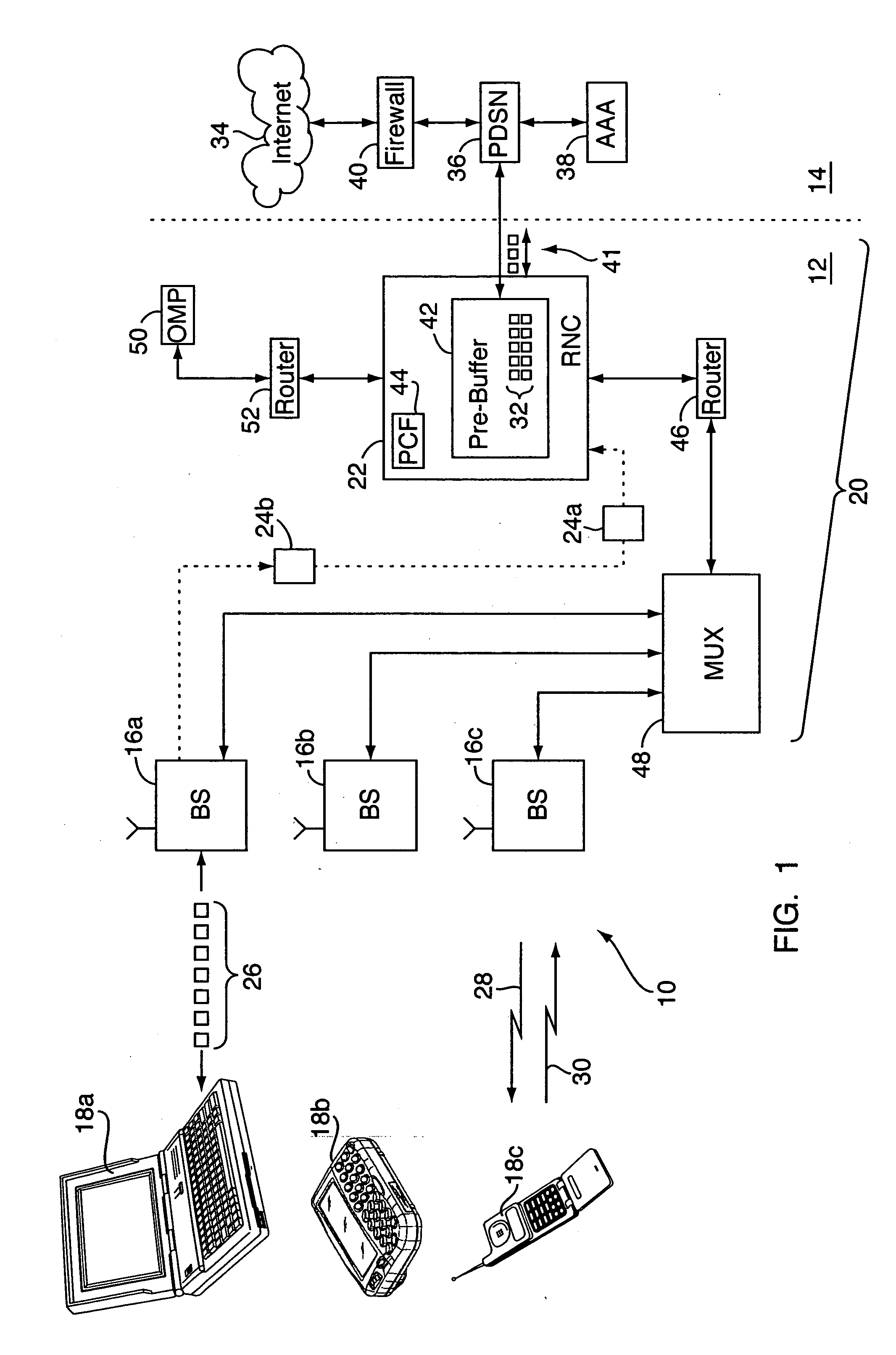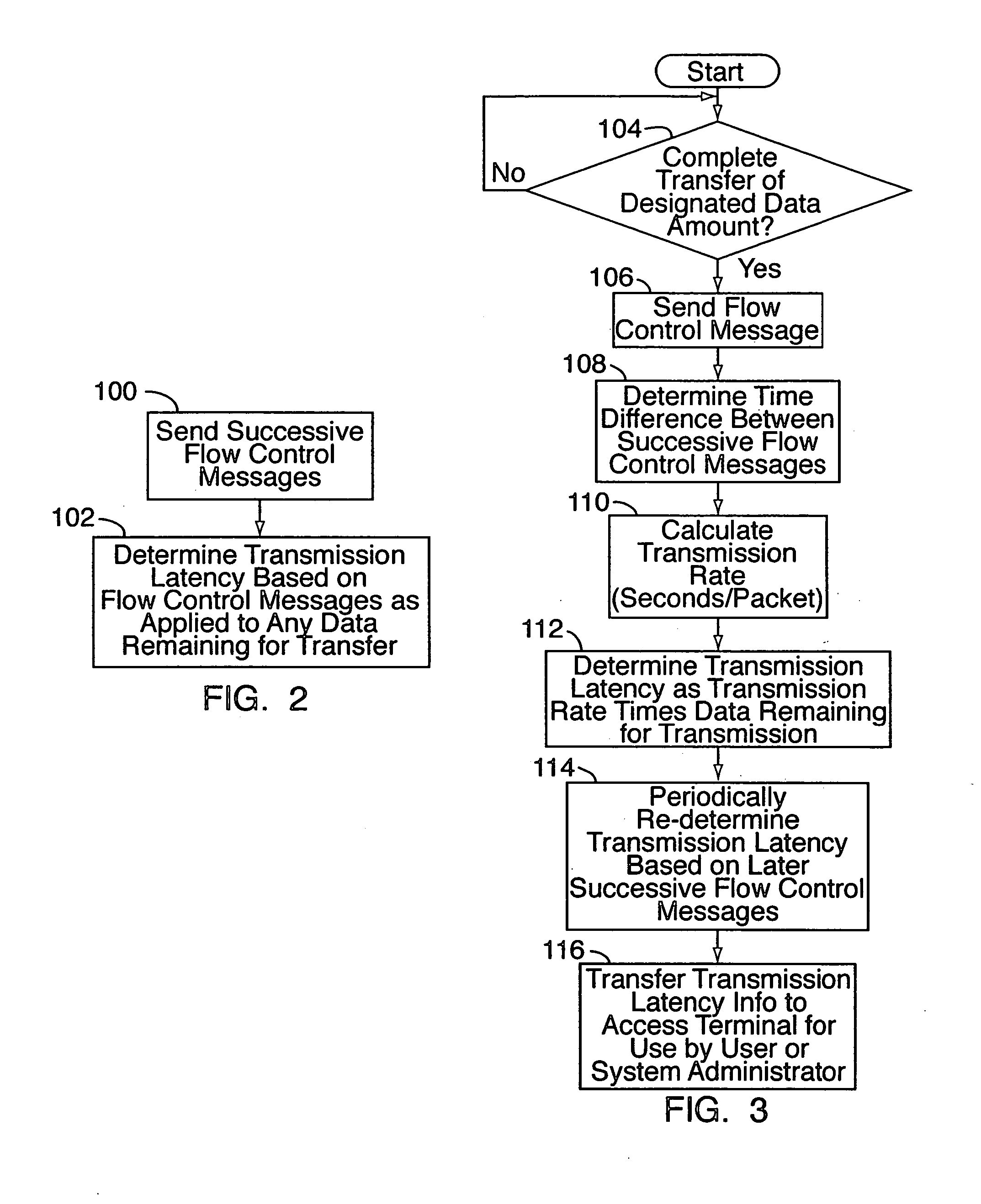Method for measuring airlink transmission latency in a 1x-EVDO wireless network
a wireless network and airlink technology, applied in the field of communication, can solve the problem that packets cannot be blocked
- Summary
- Abstract
- Description
- Claims
- Application Information
AI Technical Summary
Benefits of technology
Problems solved by technology
Method used
Image
Examples
Embodiment Construction
[0020] With reference to FIGS. 1-8, various embodiments of a method for measuring airlink transmission latency (and possibly other data transfer rate and related airlink characteristics) are implemented on or as part of a wireless communication network 10, e.g., a CDMA-based 1x-EVDO network or other wireless network. The wireless network 10 may include a radio access network portion (“RAN”) 12 and a core IP (Internet Protocol) network portion 14. The RAN 12 includes one or more fixed base stations 16a-16c (“BS”) each with various transceivers and antennae for radio communications with a number of distributed wireless units 18a-18c, e.g., mobile phones, “3-G” (third generation) wireless devices, wireless computer routers, and the like. The base stations 16a-16c are in turn connected to a RAN “front end”20, which may include a mobile switching center and / or radio network controller (“RNC”) 22 and other components which together act as the interface between the base stations 16a-16c an...
PUM
 Login to View More
Login to View More Abstract
Description
Claims
Application Information
 Login to View More
Login to View More - R&D
- Intellectual Property
- Life Sciences
- Materials
- Tech Scout
- Unparalleled Data Quality
- Higher Quality Content
- 60% Fewer Hallucinations
Browse by: Latest US Patents, China's latest patents, Technical Efficacy Thesaurus, Application Domain, Technology Topic, Popular Technical Reports.
© 2025 PatSnap. All rights reserved.Legal|Privacy policy|Modern Slavery Act Transparency Statement|Sitemap|About US| Contact US: help@patsnap.com



